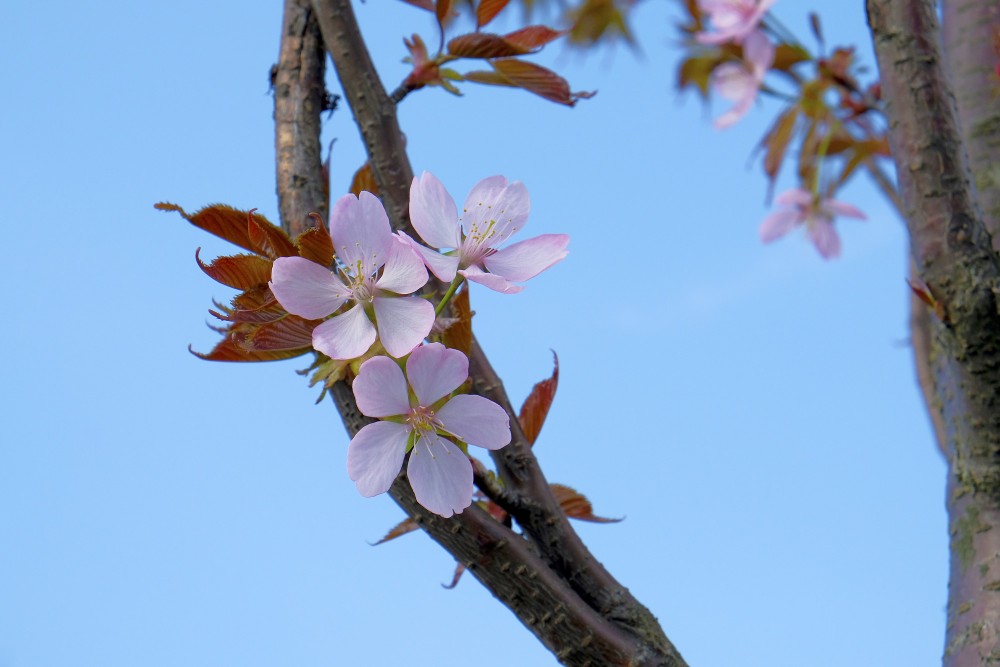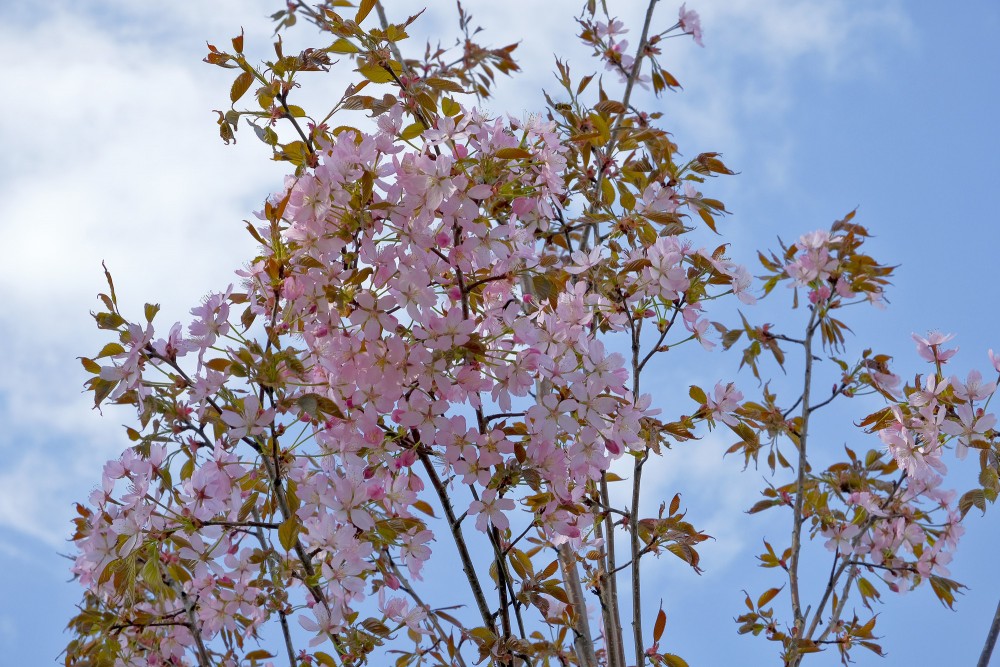Prunus sargentii (Sargent's cherry)
Prunus sargentii, commonly known as Sargent's cherry or North Japanese hill cherry, is a species of cherry native to Japan, Korea, and Sakhalin (Russia).
The tree was named for Charles Sprague Sargent.
| Prunus sargentii | |
| Kingdom: | Plantae |
| (unranked): | Angiosperms |
| (unranked): | Eudicots |
| (unranked): | Rosids |
| Order: | Rosales |
| Family: | Rosaceae |
| Genus: | Prunus |
| Subgenus: | Cerasus |
| Species: | P. sargentii |
Description
Prunus sargentii is a deciduous tree that grows 20–40 feet or 6-12 meter in height. Its crown spreads to a width of 20–40 feet. New growth is a reddish or bronze in color, which changes to shiny dark green. The leaves are obovate and have serrated margins. Leaves are 3–5 inches (7.6–12.7 cm) in length and are arranged alternately. In fall, the leaves turn red, orange, or yellow. It grows single pink flowers on 1-in pedicels, which result in purple-black fruit in summer. The fruit is a favorite of birds, but because of their size (small, pea sized) and color, are considered inconspicuous to humans.
Cultivation
P. sargentii is a fast-growing ornamental tree requiring sun and well-drained soil. The tree can tolerate wind, but not air pollution; it is one of the hardiest cherries, and can be easily transplanted. This makes the tree suitable for use as a street tree. The tree is moderately drought-tolerant.
History
Native to Japan, the tree was introduced to America and then the United Kingdom in 1908.
en.wikipedia.org


